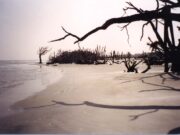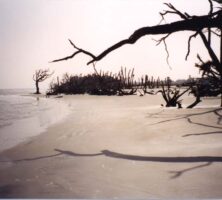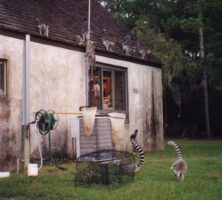St. Catherines Island is a privately owned barrier island situated midway on the Georgia coast. Located in Liberty County about fifty miles south of Savannah, the undeveloped island is about ten miles long and one to three miles wide. Its wide sandy beach is nearly eleven miles long.
More than half of the island’s 14,640 acres are tidal marsh and wetlands. About 6,700 acres are densely forested upland, with pine and live oak being the predominant species. It is also the site of one of the most important archaeological investigations along North America’s Atlantic Coast.
Designated as a National Historic Landmark site because of its rich human history, St. Catherines is owned and managed by the St. Catherines Island Foundation. The island also has been the subject of extensive biological surveys. In addition, the Wildlife Conservation Society of New York’s Bronx Zoo once kept hundreds of exotic and endangered animals there to propagate them and then release them into their wild native habitats.
Geologic History
The northern and central parts of St. Catherines are Pleistocene-epoch components of a previous barrier shoreline. The northeastern, central, and southern beaches and ridges are younger components, being Holocene in origin.
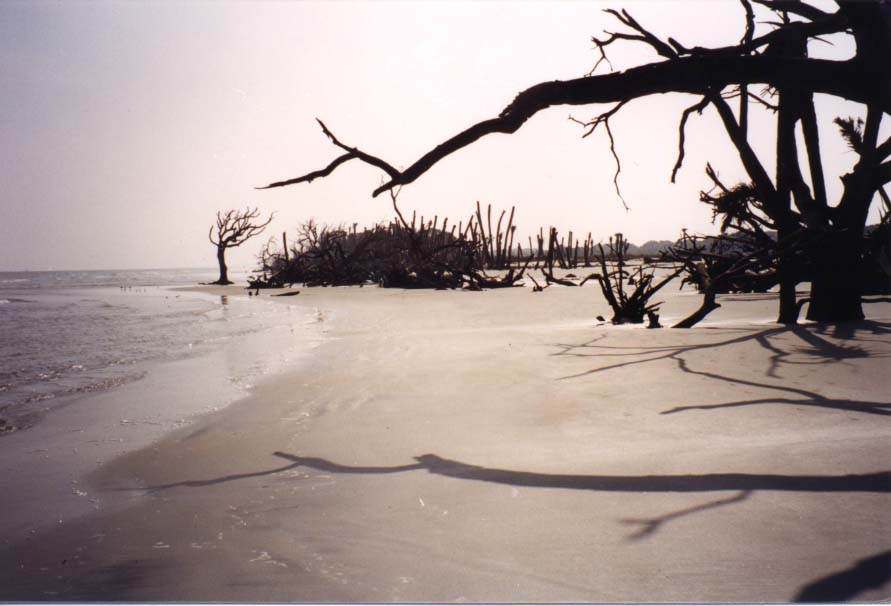
The most dramatic geologic feature on St. Catherines—and perhaps along the entire Georgia shoreline—is a steep, twenty-foot “sea bluff” overlooking the beach near the island’s north end. St. Catherines is unusual among the Georgia barrier islands in that it has experienced considerable shoreline retreat and little accretion (the counterpart to erosion) over the past century, perhaps because of its great distance from any major river.
Human History
Native Americans used St. Catherines as a hunting and fishing ground as many as 4,000 years ago. The Guale Indians are believed to have had a town on St. Catherines in the 1500s. The island’s early history, however, is not well known. One reason is that erosion has erased much of the archaeological record of the early inhabitants.
The recorded history of St. Catherines begins with the coming of Spaniards to the island in the late 1500s. Spanish Franciscan friars, operating out of St. Augustine, Florida, established a small mission outpost on St. Catherines in the 1570s to convert the Indians to Christianity. In 1597 the Guale Indians staged a rebellion, and the mission was burned. In 1605 Spanish authorities and Franciscan friars reestablished the Mission Santa Catalina de Guale on St. Catherines, ushering in the so-called Golden Age of Franciscan missions on the Georgia coast. The Santa Catalina mission became the primary mission-presidio of the Spanish in a line of missions established on several barrier islands between Parris Island, South Carolina, and Amelia Island, Florida.
Relations between the Spanish and Native Americans were relatively calm between 1605 and 1645, but after that, a pattern of general decline set in. Native revolts, disease epidemics, pirate raids, and other problems all took their toll. After the English established a settlement at Charlestown (later Charleston), South Carolina, in 1670, the end of the mission on St. Catherines was close at hand, as pressure by English colonial and commercial interests began to push the Spanish out. They abandoned the mission by 1680. Creek Indians then moved onto the island and established a village there.
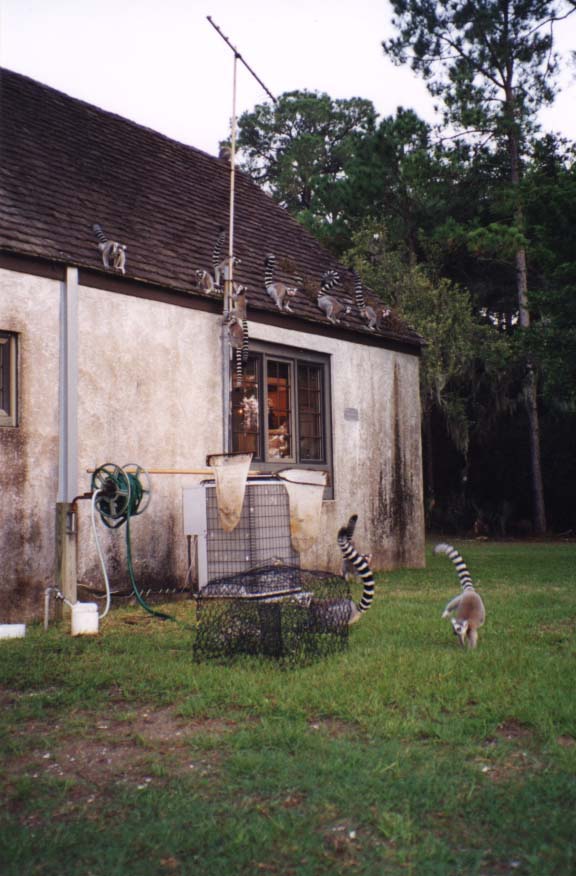
In the 1730s Savannah’s founder, James Oglethorpe, claimed St. Catherines as part of the colony of Georgia. His interpreter, Mary Musgrove, who was half Creek, challenged that claim, asserting that she and her husband, Thomas Bosomworth, received St. Catherines and other barrier islands from the Creeks. In a settlement with the British crown, the couple was awarded St. Catherines in the 1760s.
In 1766 the island was leased to Button Gwinnett, one of the three Georgia signers of the Declaration of Independence. Gwinett lived on St. Catherines until 1777, when he died from a fatal wound inflicted by Lachlan McIntosh during a duel. Gwinnett’s home still stands today on the island. Jacob Waldburg, the owner of many enslaved laborers, acquired the island in 1800 and grew Sea Island cotton there. The island was run as a plantation for nearly a century, until the Civil War (1861-65).
After the Civil War, Sherman’s Field Order No. 15 awarded St. Catherines and the other islands to freedpeople. Tunis Campbell established dominion over Ossabaw, Sapelo, and St. Catherines islands as “governor,” with the seat of his kingdom on St. Catherines. Under the auspices of Sherman’s field order, Campbell ruled from the Button Gwinnett House from 1865 until 1867. When Sherman’s order was challenged, the island reverted to its previous owner. The freedpeople were forced to relocate to White Bluff, on the Georgia mainland.
St. Catherines was purchased in 1876 by John J. Rauers of Savannah. He built one of the nation’s finest country homes and private game reserves on the island. In 1898 a large hurricane swept away the mansion. In 1943 Edward John Noble, a New York businessman who made his fortune with the Life Savers Candy Company, purchased St. Catherines, established a Black Angus cattle operation there, and used the island as a business retreat until his death in 1958. In 1968 the island was transferred to the Edward John Noble Foundation.
The island is now owned by the nonprofit St. Catherines Island Foundation, which aims to promote the conservation of natural resources, survival of endangered species, and preservation of historic sites, in addition to expanding human knowledge in the fields of archaeology, botany, ecology, natural history, zoology, and other scientific and educational disciplines.
Archaeological Research
In 1986, after a methodical twelve-year-long search, David Hurst Thomas, an archaeologist from the American Museum of Natural History in New York City, found what remained of the Mission Santa Catalina de Guale on St. Catherines. His find confirmed that Spanish missions existed in Georgia nearly two centuries before the Spanish missions in California. His discoveries also verified that Santa Catalina was the first planned settlement by the Spanish in Georgia.
The archaeological digs at the mission site, laid out by the Spanish, exposed the footprints of three kinds of buildings: a church, a friary or living quarters, and a kitchen. Thousands of artifacts were also found, including pottery, food scraps, and imported Spanish bowls, beads, and religious medals.
The project also documented the oldest known church in Georgia, and possibly in the United States. It showed that life at the mission was very different from life in the main Spanish settlements like St. Augustine, since compromises to accommodate Indian beliefs and customs were very important at remote outposts. Also, careful town planning, even at frontier settlements, was as important in the Spanish colony as it was for the English more than a century later.
Thomas’s archaeological team also found Native American graves predating the Spanish. Ten burial sites have been dated to 1350 B.C.
In 2004 more than a million objects—known as the St. Catherines Island Foundation and Edward John Noble Foundation Collection—from the digs on the island were moved to the Fernbank Museum of Natural History in Atlanta. The varied artifacts include daub wall fragments and handmade religious medallions, thought to have come from the Vatican. Museum curators plan to assess the objects, evaluate the collection, and develop programs to display and conduct further research on them.


